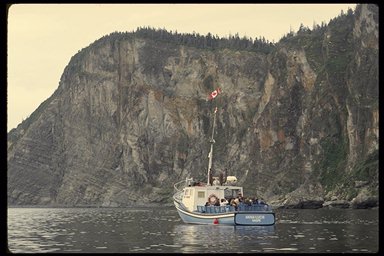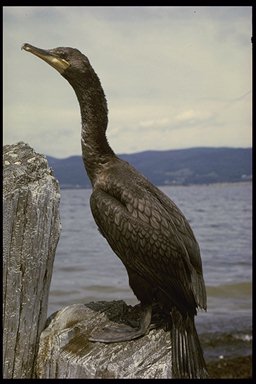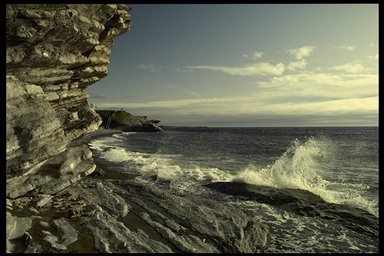

The ancient Appalachian Mountains form the backbone of this region. These worn, plateau-like flat-topped mountains, many with summits over 900 metres, compose the most spectacular, accessible mountain scenery in Canada east of the Rockies. The peaks are barren and covered with broken shale. Mount Jacques Cartier is the highest, at 1320 metres. Rivers have cut deep gorges through these ranges, widened during the most recent glaciation into magnificent U-shaped valleys. At the tip of the Gaspé Peninsula, the mountains meet the sea in a series of spectacular multi-hued cliffs and plunging headlands.
VEGETATION:Highly variable, the vegetation of this region includes isolated populations of species normally expected far to the north and south. The highest peaks and exposed cliffs provide habitat for several arctic-alpine species normally found thousands of kilometres away in the Rockies or the Arctic - relics from a time when arctic conditions were prevalent throughout this region.
In the central chain of mountains, high elevations and strong maritime influences combine to produce a forest dominated by conifers. White spruce, balsam fir and black spruce, with an understory of feather moss, form a continuous cover except on the higher, more exposed peaks, where rock barrens and krummholtz (thickets of stunted, twisted spruce and fir) occur. In the river valleys and at lower elevations, the vegetation has a southern flavour. Sugar maple, white pine and eastern hemlock form a rich mixedwood forest. Dry sites are characterized by red oak, red pine and white pine; wet sites by red maple, black ash and eastern white cedar.
WILDLIFE:"In the Gaspé the hunter does not lack as often game as shot and powder." This statement from a late nineteenth-century tourist brochure gives an indication of the past wealth of wildlife in this area. Like the vegetation the wildlife shows marked influences from both north and south. Caribou, which once flourished throughout the central mountains, have been gone for over a century except for an isolated herd in Gaspsie Provincial Park. The wolf and wolverine have also disappeared from the region. Species such as moose, black bear, red fox, lynx, snowshoe hare and others that thrive in boreal forests followed the retreat of the glaciers. Others, such as white-tailed deer, coyotes and groundhogs, moved into the region after settlers had cleared the land for farms and towns.
The red-walled cliffs and islets are home to thousands of sea and coastal birds. Bonaventure Island, one of many Migratory Bird Sanctuaries found in this region, supports a colony of gannets, common murres and a few puffins. Gulls, black guillemots, razorbills, double-crested cormorants and black-legged kittiwakes nest on narrow ledges and atop cliffs. Along the south shore of the St. Lawrence flocks of migrating waterfowl congregate on the tidal flats.

Forillon National Park (240 km2) represents the Notre Dame Mountains and the boreal forest and coastal zone elements of this region. It includes a 160-metre-wide marine component extending along the coast. The park is noted for its abundance of marine mammals and birds. Double-crested cormorants, black guillemots, black-legged kittiwakes and razorbills nest on the coastal cliffs. Atlantic puffins, Leach's petrels and common murres feed in the fertile waters offshore. Harbour and grey seals regularly haul out on shoals and rocky points, while many species of whales - harbour porpoises, pilot whales, minke, sei, finback and humpback - are often seen from shore.
The richness of the sea has always been linked to man's presence here. The first European explorers found Micmac and Iroquois who had travelled here in summer to fish. In the eighteenth century, fishing villages based on the export of dried cod to Europe and the Caribbean were established along the coast. The traditional lifestyle of the cod fishermen of this region is a major focus of the park's interpretation program. Forillon was established in 1970 pursuant to a federal-provincial agreement with the Government of Quebec.
